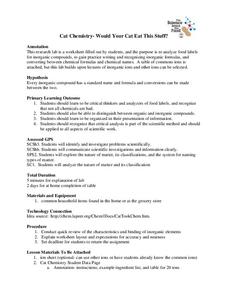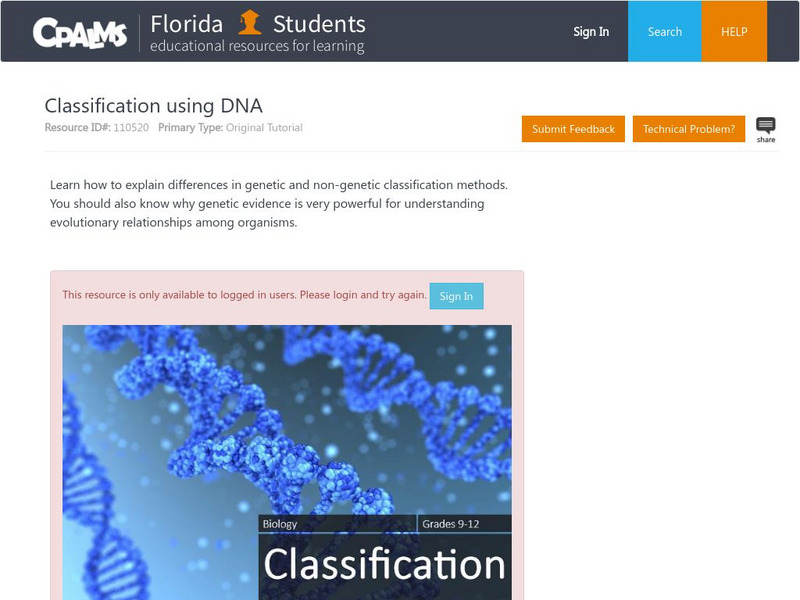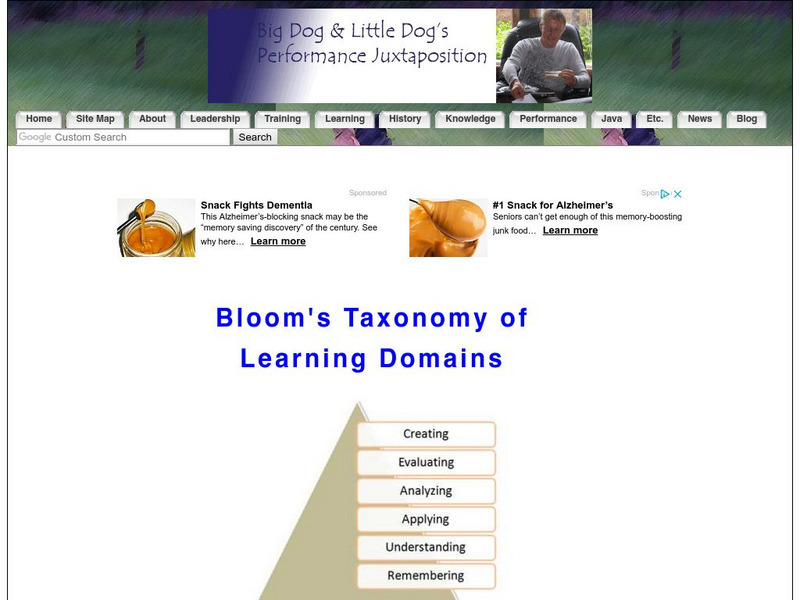Conneticut Department of Education
Instructional Strategies That Facilitate Learning Across Content Areas
Imagine 28 instructional strategies, appropriate for all subject areas and all grade levels. Directed Reading-Thinking Activities (DRTA), Question-Answer Relationship (QAR) activities, KWL charts, comparison matrixes, classification...
Centre for Innovation in Mamatics Teaching
Area, Perimeter and Volume
Develop young mathematicians' knowledge of two- and three-dimensional shapes with this geometry workbook. From learning about the classifications of different shapes and figures to calculating their area, perimeter, and volume, this...
McGraw Hill
Arthropods
Are spiders related to crabs? Study the order of arthropods with a reading selection about animal diversity. It provides details about each class within the order, as well as vivid pictures and explanatory charts.
National Institute of Open Schooling
Biomolecules
An informative lesson has learners read about, discuss, and study the classification, structure and importance of the following biomolecules: carbohydrates, proteins, lipids, nucleic acids, and enzymes.
University of Georgia
Would Your Cat Eat This Stuff?
Processed foods use inorganic compounds for flavoring and preservation. This take-home laboratory challenges scholars to find 20 different compounds identified on the labels of foods to list on their data collection sheet. The activity...
Other
Southwest Tennessee Community College: Classification of Organisms
College-level instructor's notes describing taxonomy. Explanations and images give a chronological history of the science of classifying organisms.
CK-12 Foundation
Ck 12: Biology: Classifying Organisms Study Guide
This comprehensive study guide covers the main terms and concepts needed for a unit on classifying organisms.
BiologyWise
Biology Wise: Classification of Bacteria
Explains how bacteria are classified by gram staining for medical purposes, and how they are classified by scientists based on Bergy's Manual of Systematic Classification. Also presents a list of hundreds of bacteria organized into their...
CPALMS
Florida State University Cpalms: Florida Students: Classification Using Dna
Identify the differences in genetic and non-genetic classification methods. Why is genetic evidence powerful for understanding evolutionary relationships among organisms? Find out!
CPALMS
Florida State University Cpalms: Florida Students: Diagramming Diversity I
Identify how living organisms are classified according to their evolutionary history. Recognize how a hierarchical classification scheme can be used to classify living organisms based on physical characteristics.
BiologyWise
Biology Wise: An Overview of the Euglena Classification
Describes the classification, structure, habitat, lifespan, method of reproduction, and diet of Euglena, a unicellular organism.
BiologyWise
Biology Wise: Classification of Amoeba (Ameba)
Describes the characteristics of amoeba and their classification.
CPALMS
Florida State University Cpalms: Florida Students: Diagramming Diversity Ii
Expand understanding of classification with this tutorial designed to help you learn how living organisms are classified according to their evolutionary history.
BiologyWise
Biology Wise: Amoeba Facts
Presents facts about amoebas, including their physical characteristics, reproduction, and classification.
BiologyWise
Biology Wise: A Brief Understanding of Euglena Movement
Describes the characteristics and classification of Euglena, how it reproduces, and how it is able to move through water using its single flagella.
Other
Panhandle Area Educational Consortium: The Six Kingdoms of Life [Pdf]
Scientists look at the evolutionary history of organisms to divide them into kingdoms. For awhile, there has been 5 kingdoms, but many scientist are now using 6 kingdoms.
Estrella Mountain Community College
Online Biology Book: Biological Diversity: Fungi
Find out about the kingdom of fungi. See full-color diagrams and microscopic photographs as you learn about the classification of this group of organisms.
BiologyWise
Biology Wise: Different Types of Bacteria
Discusses the different criteria used to classify bacteria and the groups of bacteria within each category. Groups are organized by characteristics such as morphology, shape, cell wall structure, and presence of flagella.
Donald Clark
Bloom's Taxonomy of Learning Domains
This article--in text and charts--explains the three learning domains devised by Benjamin Bloom.
Biology Corner
Biology Corner: Cladogram Analysis
A lesson plan where students analyze a cladogram to understand a derived characteristics between a group of organisms. After analyzing the prepared cladogram, students create their own.
University of California
Ucmp: Introduction to Ctenophora
This is an advanced level review of the biology of these organisms. The opening photographs are worth seeing!
Biology 4 kids
Biology4 Kids: The Top Four Kingdoms
Read about the four most familiar kingdoms: fungi, plant, animal, and protist.
Other
Stat Soft: Statistics Glossary
Dozens of statistical terms are defined and illustrated in this glossary.
BiologyWise
Biology Wise: Diatoms Facts
Provides information about diatoms, including their physical characteristics, where they can be found, their classification, how they reproduce, how they form diatomaceous earth when they become fossilized, and their importance to...














